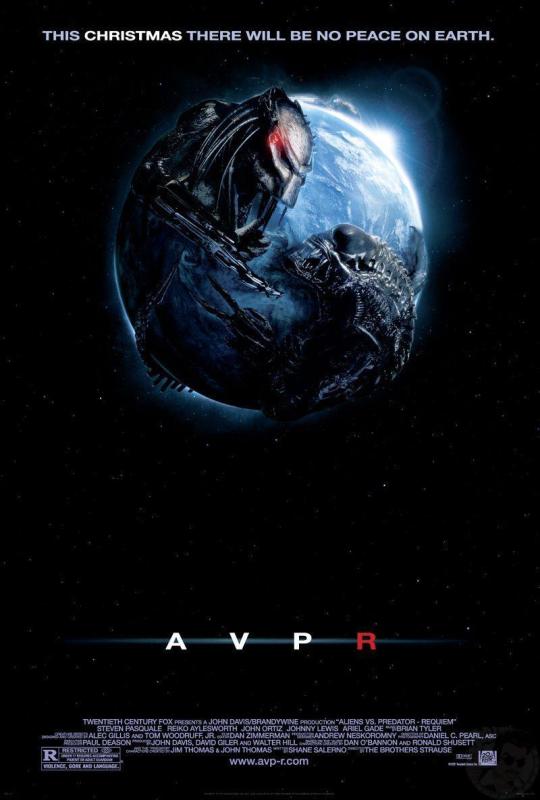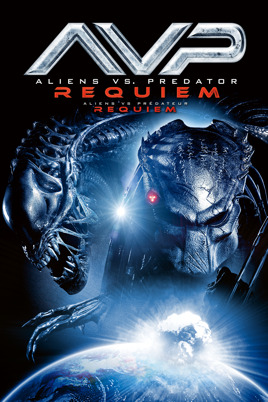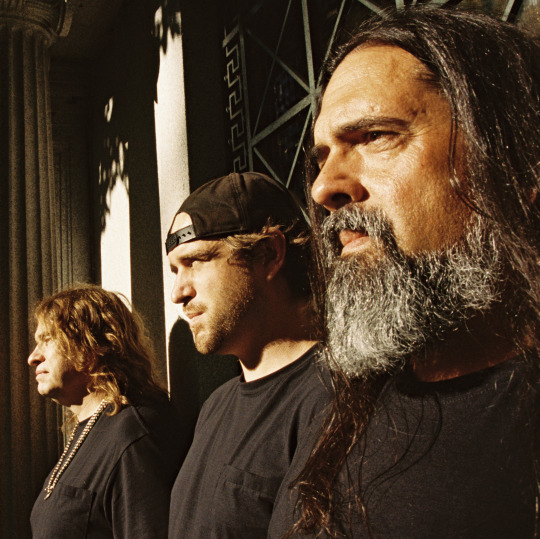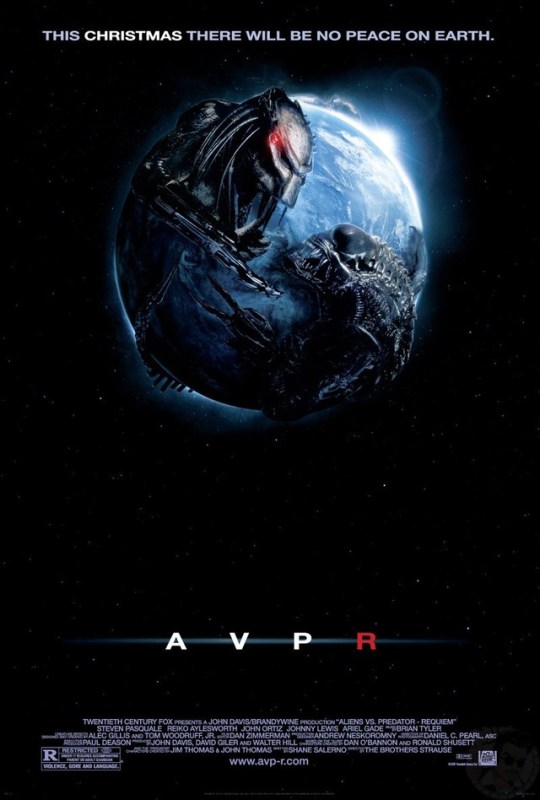#Steven Salerno
Text
TAX DAY tomorrow!
Posted here are a couple recent drawings I created reflecting on TAX DAY -the annual (and usually depressing) payment to a host of various taxes… Chin up!
#taxes#tax day#tariffis#IRS#United States Treasury#Taxes Due#Tax Payements#Tax Returns#illustration#Steven Salerno#stevensalerno.com
3 notes
·
View notes
Note
Hey, this is a list of YouTubers who enjoy Harry’s and/or Louis’ music and are respectful to larries/do not mention them (as far as i know):
Steven In Stereo
Michael Beveraggi
Blake McLain
Anthony Aiken Junior
Caitlyn Marie Reacts
Fabrizio Salerno
Jacob Restituto
Sound Vapors
The Bascome Twins
ChaseNRio
Turning the Tables
Yam Haus
Derrik Rockne
P.s if there is anyone on this list that has been offensive or a bully towards larries, or used them for clout and then made fun of them after please feel free to mention them. Maybe we can start a tag #reaction channels ?
P.p.s excuse that they are not alphabetically ordered, its bugging me too but i couldn’t bother its 3am where i live
Hi darling, thank you so much for this! I'm only familiar with the first 4 plus Turning The Tables (although their wonderful Harry's House reaction video got taken down 😠). I'm looking forward to checking the others out!
35 notes
·
View notes
Photo

Enrique Irazoqui in The Gospel According to St. Matthew (Pier Paolo Pasolini, 1964)
Cast: Enrique Irazoqui, Margherita Caruso, Susanna Pasolini, Marcello Morante, Mario Socrate, Settimio Di Porto, Alfonso Gatto, Luigi Barbini, Giacomo Morante, Giorgio Agamben, Guido Cerritane, Ferrucio Nuzzo, Otello Sestili, Alessandro Tasca. Screenplay: Pier Paolo Pasolini. Cinematography: Tonino Delli Colli. Production design: Luigi Scaccianoce. Film editing: Nino Baragli. Music: Luis Bacalov.
Sandwiched between two epic Hollywood versions of the life of Jesus released in the 1960s -- King of Kings (Nicholas Ray, 1961) and The Greatest Story Ever Told (George Stevens, 1965) -- Pasolini's version looks like the most successful today. It is raw and unfiltered through Technicolor and wide-screen processes, unencumbered with movie stars. Its Jesus is not blue-eyed like Jeffrey Hunter or Max von Sydow, but a darkly handsome Spanish economics student named Enrique Irazoqui, who had never acted before. (His voice is dubbed by Enrico Maria Salerno, a professional actor who also dubbed Clint Eastwood's voice in the Italian releases of Sergio Leone's Westerns.) The film takes no liberties with the story as presented in the New Testament Gospel of St. Matthew, following it virtually to the letter. The dialogue in Pasolini's screenplay relies for the most part only on the words actually spoken in the gospel. In fact, those unfamiliar with the narrative presented there may sometimes find the film's story hard to follow. No elaborate sets were constructed: Pasolini filmed on locations in Calabria and Sicily and other parts of southern Italy, enlisting the locals as cast members and extras. Like Carl Theodor Dreyer's The Passion of Joan of Arc (1928), it is a film of faces, and seldom handsome ones -- with the exception of the delicately beautiful Margherita Caruso, who plays the young Mary. (The older Mary is played by Pasolini's mother, Susanna.) Irazoqui, with his unibrow, looks strikingly like a figure out of a Byzantine mosaic or a Russian icon. The cumulative effect of the film is plausibly much closer to the actual events than the more conventional dramatizations of them like the Hollywood epics. Pasolini was, of course, an unbeliever, a gay Marxist, and the film is more intellectual than spiritual. The Jesus of the film preaches love, but he can also be harsh and enigmatic, proclaiming that he comes to bring not peace but a sword and, in one of the oddest moments in the gospel, smiting a fig tree for some unspecified offense. There are moments when, by following the biblical narrative so closely, the film falls apart, as in the interpolation of the story of Salome (Paola Tedesco) and John the Baptist (Mario Socrate), and it's clear that, as he later admitted, Pasolini's heart is not in the depiction of such miracles as the loaves and fishes and Jesus's walking on water. The choice of music to accompany scenes is curiously eclectic, ranging from the obvious, Bach and Mozart, to the derivative, a bit of Prokofiev's Alexander Nevsky score, to the startling, African-American spirituals. But even when Pasolini's film goes awry, it remains a fascinatingly personal response to the source material.
4 notes
·
View notes
Link
0 notes
Text
'Ripley is the story of a con man who assumes the identity of a wealthy American expat. But, as star Andrew Scott told Netflix, it’s also “a story about art and beauty and sensuality… helped by the great beauty of Italy.”
Based on the 1955 Patricia Highsmith novel The Talented Mr. Ripley, the limited series follows charming con artist Tom Ripley (Scott) on a trip to Italy in the 1960s bankrolled by a shipping magnate to retrieve his wayward son, Richard “Dickie” Greenleaf (Johnny Flynn). Tom ingratiates himself into Dickie’s life — much to the chagrin of Dickie’s suspicious girlfriend, Marge Sherwood (Dakota Fanning) — and soon is on the run from police while posing as Dickie in Rome.
Creator Steven Zaillian’s team of talented artists — production designer David Gropman, director of photography Robert Elswit, and costume designers Maurizio Millenotti and Giovanni Casalnuovo — meticulously re-created a 1960s aesthetic. Below, find out how they fashioned such a stunning period setting in Ripley.
THE LOCATIONS
Ripley’s filming locations read like a dream vacation: Venice, Rome, Naples, Palermo. Zaillian and Gropman drove the length of the Amalfi Coast, going from Salerno to Sorrento, “looking for the town we imagined Dickie Greenleaf settled in,” Zaillian told Netflix. “Most have been too modernized or gentrified for a story taking place in 1960, but there was one we came upon, a village of about 800 people called Atrani, that we found perfect.”
When the series finally filmed in 2021, it was the height of the Covid pandemic, so “there were no tourists,” said Zaillian, “which made it feel all the more like we’d gone back in time.”
Beyond the postcard-perfect vistas provided by the location, Gropman had more than 200 sets and locations to design. His researchers worked in New York, London, and Italy to make sure the plans were as accurate as possible. While Gropman and Zaillian visited several Roman apartments, the one used in the show was a set. But those real estate tours were inspirational.
“The sofa in Tom’s Rome apartment was the sofa that we saw in a villa in Rome that we both fell in love with, so we just built an exact replica,” Gropman told Netflix. “The leather chair that Ravini sits in in Tom’s apartment? I was walking by a shoe store in Rome, and there was this beautiful old leather chair. We couldn’t get that chair, but we worked with the most wonderful Italian decorator to source something. She made all of these interiors come to life in a really spectacular way.”
THE STYLE
Unsurprisingly, the costumes were as meticulously researched as the locations. Designers Millenotti and Casalnuovo created “thick binders” of images, arranged by region and year, to show Zaillian their vision of what the costumes would look like. The finished products included vintage pieces as well as outfits they crafted themselves. “From the feel of La Dolce Vita in Rome to a more working-class wardrobe in Palermo or Atrani, it’s always accurate,” said Zaillian. “And even though it was always the intention for Ripley to be in black-and-white, I asked them to clothe no one in colors, which limited them in a way that made their job even harder than it already was.”
Millenotti and Casalnuovo initially worried about the black-and-white restriction, but once they got comfortable, they told Netflix, “[We] learned how to express ourselves and build the characters only with a thousand shades of gray. It was the greatest challenge we ever faced as costume designers.”
The quiet luxury of Dickie Greenleaf
The object of Tom’s admiration, Dickie, is the heir to a shipping fortune — someone who grew up around wealth. For him, luxurious fabric and timeless style is second nature. For Flynn, the “beautifully tailored” costumes helped him get into character. “The way that the trousers sit on your waist and everything like that helps when you’re playing in this period — the grace that the clothes allow you,” he told Netflix.
Tom’s style evolution
Tom, on the other hand, is quite uncomfortable in the moneyed world he steps into, because he’s only crafting a facade. He’s a quick study, but he gets plenty of things wrong, too, like the purple paisley robe he brings to Dickie from New York. “Tom doesn’t come from the culture that Dickie comes from,” Flynn tells Tudum. “Dickie can spot something that’s unfashionable a mile off. And his taste — not necessarily in terms of his own paintings, but everything else — is meticulous.”
Was the robe really so terrible, though? “It was pretty garish,” says Flynn. “But it wasn’t that bad. It was something that your grandfather would’ve worn maybe — or certainly mine — and felt very suave.”
But as Tom becomes more comfortable amid such affluence, he begins to understand how fashion helps him fit in. “Ripley’s transformation is about seeing a subtle change but not being too brash about it,” said Scott. “We see there are different Toms: We’ve got New York Tom, Amalfi Tom, Tom as Dickie, and Venice Tom.”
1960s DESIGN
Tom is fixated on Dickie, and that singular focus extends to the objects in Dickie’s orbit, all of which are in 1960s midcentury style. Tom pockets a pen off of Dickie’s desk before returning it, a sign of what Scott calls Tom’s “almost sensual relationship with things.”
All of those meticulously curated objects — Dickie’s ring, his typewriter, even a hefty glass ashtray — become fixations for the camera, too. Scott said on Netflix’s Skip Intro podcast that Tom “loves [things], and you feel like he protects them. The camera is trained on these things so much. I suppose we as an audience are invited to just really appreciate them.”
THE ART
Life imitating art
The final episode opens with a flashback of sorts, but not to another period in Tom’s life. Instead, we travel 350 years back in time for a glimpse at the life of famed Italian painter Caravaggio. Tom is enamored by Caravaggio’s gruesome, dramatic paintings, but the two men have more in common than an appreciation for beauty and art.
“Caravaggio is another man who lived in Rome who murdered somebody and then was on the run for it for the rest of his life,” Zaillian tells Tudum. “That little parallel I thought was interesting. For the final episode, I thought it would be a lot of fun to suddenly flash back 350 years and have people say, ‘Are we watching the same show?’ And then realize, ‘Oh, yes, Caravaggio. I understand this.’ ”
Art as status symbol
For all of Dickie’s wealth, there’s one thing his money can’t buy: talent. While Dickie might enjoy the finer things in life, his artistic pursuits are a vanity project. “There’s some stuff that’s passable in the landscapes,” says Flynn, “but we all found it very funny that it was [mostly] the really objectively bad paintings that you see.”
Is Dickie a good painter? Emphatically, no. “Here’s the thing: The story is so much from Tom’s perspective, you should be in his head going, ‘Oh my God, that’s disgusting,’ ” says Flynn. “And the same with Marge’s writing as well. I think it works well if we, through Tom’s perspective, think of these people as fooling themselves and that their whole life is a bit of a bubble and an illusion and the lie that they’ve created about being these artists in exile. Yeah, the paintings were pretty bad!”
BLACK AND WHITE
AND SHADES OF GRAY
One of the most distinctive — and perhaps most period-appropriate — aspects of Ripley is its black-and-white palette, something Zaillian had planned from the beginning.
“I never saw it as some sunny, colorful postcard of a story but rather as the foreboding suspense story that it is,” he told Netflix. “It takes place in the winter of 1960 and, like many of Highsmith’s stories, has a film noir quality to it. Black-and-white can be striking in a way color can’t be, and I’m grateful Netflix agreed.”
A frame within a frame
Zaillian and Elswit had worked together on the miniseries The Night Of, so Zaillian knew his director of photography would be up for the challenge. “He loved the idea of shooting in black-and-white and brought to that seemingly simpler palette a depth to the photography that’s more evocative than color,” Zaillian said.
Another of Elswit’s choices brought even more depth to the visuals — the shots that frame Tom within another frame, including windowpanes, mirrors, doorways, and other enclosed perspectives. They suggest that, as viewers, we’re watching Tom fit himself into a box.
The deeper meanings found within Tom Ripley’s story are also imbued in the cinematography. “This show is so much about light and dark and contrasts and the underbelly and what’s going on under the surface,” said Fanning. “I love that Steven and Robert are really playing with that through the lighting and the sets, and the color palette and the tone.”
Take, for example, the closing montage that focuses on a painting from Picasso’s cubist period. “Cubism is all about deconstructing usually a human figure into parts, so that we can somehow see them more clearly when we’re not distracted by them all being in the right place,” Zaillian tells Tudum. “I felt like at the end, to see these pieces of Tom, these different personas of Tom, these different identities that he assumed, that we were actually seeing him fragmented like the cubist painting that’s right in front of him.”'
#Robert Elswit#Steven Zaillian#Netflix#Ripley#Andrew Scott#Dickie Greenleaf#Johnny Flynn#Caravaggio#Marge Sherwood#Dakota Fanning#Maurizio Millenotti#Giovanni Casalnuovo#Rome#Naples#Venice#Palermo#David Gropman#Atrani#Amalfi Coast#The Night Of#Cubism
1 note
·
View note
Text
🌈✨📚Childrens Books Banned For Inclusivity📚✨🌈
PRIDE: The Story of Harvey Milk and the Rainbow Flag
By: Rob Sanders and Steven Salerno

"In this deeply moving and empowering true story, young readers will trace the life of the Gay Pride Flag, from its beginnings in 1978 with social activist Harvey Milk and designer Gilbert Baker to its spanning of the globe and its role in today's world. Award-winning author Rob Sanders's stirring text, and acclaimed illustrator Steven Salerno's evocative images, combine to tell this remarkable - and undertold - story. A story of love, hope, equality, and pride."
~Alice 🌌
0 notes
Text
The 3rd Annual Davey Awards - The Winners!
Hello and welcome to the big day, the day I announce the winners of the 3rd Annual Davey Awards for Film Excellence for 2022. It's been a long couple of weeks of deliberation and speculation and whatnot, so let's get into it.
First, our previously announced award, the Davey Award for “Wow I hadn’t seen you on screen for a while and seeing you again made me feel kind of emotional.” The winners this year are of course, David Lynch for his role in The Fabelmans and Janet Fielding for her role in The Power of the Doctor. Now, on with the show.
The Davey for Best Supporting Actor goes to...
It's a tie! Can you believe it. I can't. The winners are Stephen Lang for Avatar: The Way of Water, Sigourney Weaver for Avatar: The Way of Water, Paul Dano for The Fabelmans, and Michelle Williams for The Fabelmans. Wow! They should swap roles next time they each do a movie. Paul Dano as Quaritch.
Up next: The Davey for Best Animated Feature. The winner is....
Turning Red! Wow. What a year for animated pictures.
The Davey for Best Production Design is awarded to Jess Gonchor, for White Noise! Likewise, the Davey for Best Costume Design goes to Ann Roth for White Noise! Wow!
The Davey for Best Screenplay (Original) this year goes to Steven Spielberg and Tony Kushner for The Fabelmans! The Davey for Best Screenplay (Adapted) goes to... Avatar: The Way of Water, written by James Cameron, Rick Jaffa and Amanda Silver, Story by Cameron, Jaffa, Silver, Josh Friedman and Shane Salerno. I see you!
The Davey for Best VFX is likewise awarded to Avatar: The Way of Water!
The Davey for Best Ensemble goes to....the team who brought us so many laughs, tears, and incredible moments of discomfort - Jackass Forever!
The Davey for Best Original Score is this year awarded to...Tindersticks, for Stars at Noon!
The Davey for Best Editing goes to...Matt Villa and Jonathan Redmond, for their work on Elvis! Shake rattle AND roll.
Now for the The Davey for Best Cinematography, which this year is awarded to...Hoyte van Hoytema, for Nope!
The Davey for Best Actor. This year, as always, two performers were recognised for their incredible work. The winners are... for his stunning breakthrough role in The Fabelmans, Gabriel LaBelle, and for her incredible turn in Nope, Keke Palmer!
For our penultimate award of the night, it's time for the Davey for Best Director. This year, the award goes to....Charlotte Wells, for her debut feature, Aftersun!
And finally...the Davey for Best Picture. Joining Never Rarely Sometimes Always in the pantheon of Best Picture winners at the Daveys is.....Nope! Congrats to Nope.
And that's it! See you again in 2024 for the next round of Daveys.
0 notes
Photo


CALIFICACIÓN PERSONAL: 6 / 10
Título Original: AVPR: Aliens vs. Predator: Requiem
Año: 2007
Duración: 86 min
País: Estados Unidos
Director: Colin Strause, Greg Strause
Guion: Shane Salerno. Personajes: Dan O'Bannon, Ronald Shusett, Jim Thomas. Personaje: John Thomas
Música: Brian Tyler
Fotografía: Daniel Pearl
Reparto: Steven Pasquale, Reiko Aylesworth, John Ortiz, Johnny Lewis, Ariel Gade, Kristen Hager, Sam Trammell, Robert Joy, David Paetkau, Chelah Horsdal
Productora: 20th Century Fox, Davis Entertainment, Brandywine Productions, Dune Entertainment
Género: Action, Horror, Adventure
https://www.imdb.com/title/tt0758730/
TRAILER:
youtube
0 notes
Text
On the Corner of Chocolate Avenue by Tzipora Cohen, illustrated by Steven Salerno
On the Corner of Chocolate Avenue by Tzipora Cohen, illustrated by Steven Salerno
On the Corner of Chocolate Avenue by Tzipora Cohen, illustrated by Steven Salerno. Clarion Books, 2022. 9780358578758
Rating: 1-5 (5 is an excellent or a Starred review): 5
Format: ARC (publication date 12/13/22)
Genre: Biography
What did you like about the book? Milton Hershey grew up poor. Often hungry, he couldn’t afford candy. He probably never tasted chocolate as a child because…

View On WordPress
0 notes
Photo

NoveList's Juvenile Brain Trust is a group of readers' advisory librarians and metadata librarians who focus on books for kids and teens. Once a week, the JBT gets together to catch up and share new books. On 9/19/2018, we discussed:
The Voice, the Revolution, & the Key, Jenny L. Cote
Mustafa, Marie-Louise Gay
Spooked!, Gail Jarrow
Pass Go and Collect $200, Tanya Lee Stone, illustrated by Steven Salerno
Every Month is a New Year, Marilyn Singer, illustrated by Susan L. Roth
Have you read any of these books? What do you think of them?
For more recommendations (plus printables and readers’ advisory tips), subscribe to the NoveList Book Squad! It's free :)
#jbt book share#book discussion#booklr#librarians#spooked#mustafa#pass go and collect 200#every month is a new year#the voice the revolution and the key#jenny l. cote#marie-louise gay#gail jarrow#tanya lee stone#marilyn singer#susan l. roth#steven salerno#picture books#ya books#children's books
1 note
·
View note
Text

youtube
Aliens vs Predator: Requiem (2007)
20th Century Fox
Impression: and the series goes back to cheesy and utterly predictable
Collection: no
Overall: ⭐️⭐️
Concept: ⭐️⭐️⭐️
Story: ⭐️1/2
Storytelling: ⭐️⭐️
Characters: ⭐️⭐️
Casting: ⭐️⭐️1/2
Visually: ⭐️⭐️
Score/Soundtrack: ⭐️⭐️1/2
Entertainment: ⭐️1/2
Best: nothing stands out for me...
Worst: do we have that much time?
#avpr#aliens vs predator requiem#2007#science fiction#20th century fox#the brothers strause#shane salerno#brian tyler#daniel c pearl#movie rating#film rating#movie review#steven pasquale#reiko aylesworth#john ortiz#johnny lewis#sam trammell#ariel gade#robert joy#kristen hager#david paetkau#matt ward#michal suchánek#david hornsby#gina holden#chris william martin#chelah horsdal#liam james#kurt max runte#confessionsofabingefreak
1 note
·
View note
Text
Just the ENDS! -a look at endpapers created for many of my picture books
Not every one of the 38 picture books I’ve illustrated to date have end papers art included… perhaps only about a third do. (usually it’s a publisher’s budgetary issue) But when the publisher does give the green light on a picture book project to include the end papers, I’m thrilled! It’s always fun and challenging to devise and create a thematic pattern reflecting the subject and feel of the story.
Posted here are some endpapers I’ve created over the years for various picture books:
^ above: endpapers from, Wild Child -written & illustrated by Steven Salerno -August 2015 Abrams Books for Young Readers. (gouache & digital)
^ above: endpapers from, Wild Horse Annie Friend of the Mustangs (nonfiction) written by Tracey Fern & illustrated by Steven Salerno - April 2019 by Farrar Straus Giroux. (gouache & digital)
^ above: endpapers from, The Secret Code Inside You -all about your DNA (nonfiction) written by Rajani LaRocca, MD & illustrated by Steven Salerno -Released in 2021 by Little Bee Books. (digital)
^ above: endpapers from, Pantaloon -written by Kathryn Jackson & illustrated by Steven Salerno -March 2010 Golden Books/Random House. (gouache & digital)
^ above: endpapers from, Love from MADELINE -written by John Bemelmans Marciano & illustrated by Steven Salerno (in the style of the creator of MADELINE, Ludwig Bemelmans) Released in Jan 2022 by Viking Books for Young Readers (Penguin-Random House) (gouache & digital)
^ above: endpapers from, PRIDE The Story of Harvey Milk and the Rainbow Flag (nonfiction) written by Rob Sanders & illustrated by Steven Salerno -April 2018 by Random House. (digital)
^ above: endpapers from, Harry Hungry! -written & illustrated by Steven Salerno -February 2009 Harcourt Children’s Books. (gouache & digital)
^ above: endpapers from, BOOM! -written by Mary Lyn Ray & illustrated by Steven Salerno -June 2013 Hyperion Books/Disney. (gouache & digital)
^ above: endpapers from, PASS GO And Collect $200 The Real Story of How MONOPOLY Was Invented (nonfiction) written by Tanya Lee Stone & illustrated by Steven Salerno -July 2018 by Henry Holt & Co/Christy Ottaviano Books. (digital)
^ above: endpapers from, Goldenlocks and the Three Pirates -written by April Jones Prince & illustrated by Steven Salerno -October 2017 Farrar Straus Giroux/Margaret Ferguson Books. (gouache & digital)
1 note
·
View note
Text
BOOM! Big, Big Thunder and one Small Dog
What a fun read!
Story is about brave, little dog named Rosie, who isn’t afraid of anything but thunder.
We are dog lovers so we were especially fond of this story.
We will definitely keep this book in our list of library faves!

0 notes
Text
Grave Next Door Drop New Single “As Heavy As Texas”
~Doomed & Stoned~
By Billy Goate

Art by Steven Yoyada
My sleep has gone sideways this week, but it's given me some late nights and early mornings to chill with Michigan dark stoner metal outfit GRAVE NEXT DOOR. Indeed, it's ideal for those quiet, surreal moments of solitude -- and however loud you wish to audit it, for it is the vibe that pervades and creates a kind of dank Saturday night at 1:30am feel.
I intuit the influence of early Soundgarden on a song like "Bloody Nuns" -- you know, back when Soundgarden was raw, uncouth, and entirely underground. "Witch Head" wafts the muddy lo-fi recording ambience of '90s Godflesh and Fudge Tunnel. "Charnel House" gives me the gritted teeth of vintage Kurt Cobain. "Heathen" channels Prong. In fact, every song on 'Sanctified Heathen' (2022) is a romping adventure into another unanticipated situation. You dare not underestimate a single track you meet on these mean streets (stick with "Witch Head" a little longer).
This weekend, Doomed & Stoned is giving you an advance listen to "As Heavy As Texas," the latest single to emerge from the band's debut LP. It begins with some righteous slow shredding (a shot of warmth splashed across my spine at this Sleep-esque moment). It's joined by Travis Soleski's thumping beat, and chanting vocals follow. What's this? A chorus I might be singing on the way to work in the morning.
On the recording, production, and themes the band comments:
Our approach was raw all the way and we achieved that with a very raw '70s and '80s sound, enabling us to capture our live energy on the record. When we started as a band, we said we would never put anything on an album that we couldn’t do live. The common threads throughout the songs are of personal struggles, despair, and various aspects of death. The album is set to release in the spring on Black Doomba Records and we greatly look forward to supporting it with a tour.

Jump-started by Patrick and Anthony Salerno in 2018, the brothers decided to name the band after a graveyard that was adjacent to their house. Did you hear me? IT WAS RIGHT NEXT DOOR. I know, you hard atheists say there's no such thing, but imagine the ghost stories! Grave Next Door describes the resulting sound as "dark and macabre, drawing from the iconic sounds of Black Sabbath, Black Flag, and even Cream."
On Sanctified Heathen the band reveals their powers with old school ethos and ambience, diggable lyrics that touch relevantly on our fucked-up world (and often existence), and a downtuned sound that is often-times intimidating. Grave Next Door is the new face of Street Doom.
Again, the band:
"As Heavy As Texas" is the first song we wrote after COVID cut our tour short to play festivals in Austin in March of 2020. It was a strange time, as we watched the world shut down and one of us became very ill. A friend took us in for three days and we soaked in the landscape and ambiance of Texas. There was this feeling in riff and rhythm that personified our extremely bizarre and positive experience. People at the venues were thanking us for not canceling out as other bands had. The Texas metal community has the most hospitable people on earth. The song wrote itself in literally ten minutes. We even returned to Texas to film the music video for the song.
Heavy stuff. Sanctified Heathen by Grave Next Door drops March 18 on Black Doomba Records.
Give ear...
As Heavy as Texas (single from 'Sanctified Heathen) by Grave Next Door
Follow The Band
Get Their Music
#D&S Debuts#Grave Next Door#Grand Rapids#Michigan#stoner rock#doom metal#D&S Reviews#Doomed and Stoned
3 notes
·
View notes
Photo




WATCHING
For a movie with
Actors from across “24”, “Rescue Me”, “Sons of Anarchy” and “True Blood” you’d think the movie would be pretty good, right?
The acting was fine considering… But the writing sucked ass it was almost like a trope-y slasher horror movie where any time a female character removes her shirt someone dies.
And this writer is going to be in the team that writes James Cameron’s Avatar 2-5? Oh god help us.
The Directing duo of brothers who directed this only made the movie Skyline after this so they’re pretty much done or something.
This movie was a major Fuck up. AVP was okay. I’m not a huge fan of cross-franchise ‘VS movies’. Even Freddy VS Jason was “meh”.
Steven Pasquale as Dallas (Rescue Me; Sean Garrity)
Reiko Aylesworth as Kelly (24; Michelle Dessler)
Johnny Lewis as Ricky (Sons of Anarchy; Half-Sack)
Sam Trammell as Tim [is killed buy a Xenomorph within the halfway point of the film] (True Blood; Sam Merlotte)
ALSO how the fuck did Japan get such an awesomely designed poster for this shitty movie and the US and English countries got the one that looks a 12 year old made it in MS Paint?
#alien vs predator requiem#alien vs predator 2#the brothers strause#shane salerno#steven pasquale#reiko aylesworth#john ortiz#johnny lewis#ariel gade#david paetkau#sam trammell#robert joy#horror#sci-fi#sci-fi horror#watching
2 notes
·
View notes
Text
Tags - Architects/designers I-Z
I.M. Pei
Ignaty Milinis
Ignazio Gardella
Igor Vasilevsky
Ilia Golosov
Isamu Noguchi
Ivan Fomin
Ivan Leonidov
Ivor Smith and Jack Lynn
J.B. Hourlier
J.B. Ingwersen
J.F. Staal
J.J.P. Oud
L.J. sert
J.M. Lamuniere
J.M. Stokla
James Gowan
James Stirling
Jan Duiker
Jan Wils
Jean Bourgon
Jean Dubuisson
Jean Prouve
Jean Renaudie
Joao Filgueiras Lima
Joaquim Guedes
Johann Georg Gsteu
John Andrews
John Bancroft
John Dinkeloo
John Hejduk
John M. Johansen
John Madin
John Pawson
John Portman
John Storrs
Jorn Utzon
Jos Bedaux
Josef Schulz
Joseph Salerno
Jozsef Fischer
Juan O'Gorman
Juliaan Lampens
Jurgen Sawade
Justus Dahinden
K.L. Sijmons
Kalff
Karl Ehn
Karl Moser
Karl Schwanzer
Kenzo Tange
Kevin Roche
Kisho Kurokawa
Kiyonori Kikutake
Konrad Wachsmann
Konstantin Melnikov
Kunio Mayekawa
Kurt Schlauss
Kurt Schwitters
Le Corbusier
Lebbeus Woods
Leonardo Savioli
Leonid Vesnin
Leslie Martin
Lev Rudnev
Lina Bo Bardi
Louis Fumet
Louis Kahn
Louis Noiray
Louis Sullivan
Lucio Costa
Ludwig Hilberseimer
Luigi Figini
Luigi Moretti
Luis Barragan
Luis Peña Ganchegui
Lutyens
Malevich
Manfred Hermer
Marcel Breuer
Marcel Lods
Marcello Piacentini
Mario Pani
Marius Duintjer
Mart Stam
Martin Elsaesser
Martin van Treeck
Max Abramovitz
Max Berg
Mendelsohn
Michel de Klerk
Mies
Minoru Yamasaki
Moholy-Nagy
Moisei Ginzburg
Moshe Safdie
MVRDV
Neave Brown
Neutra
Nicholas Grimshaw
Nikolai Kolli
Noi Trotsky
O Studio
Olivier-Clement Cacoub
Olson Kundig
OMA
Oscar Niemeyer
Oswald Ungers
Otto Herbert Hajek
Ove Arup
Owen luder
P.V. Jensen Klint
Pancho Guedes
Panteleimon Golosov
Paolo Portoghesi
Paolo Soleri
Paul Baumgarten
Paul Ludwig Troost
Paul Nelson
Paul Rudolph
Paul Stohrer
Paul Virilio
Paulo Mendes Da Rocha
Pei Cobb Freed
Peter Behrens
Peter Eisenman
Peter Märkli
Peter Zumthor
Philip Johnson
Pier Luigi Nervi
Pierre Jeanneret
Pierre Koenig
Pierre Parat
Piet Blom
Piet Elling
Piet Mondriaan
Piet Zanstra
Pietro Belluschi
Pietro Lingeri
Pot Keegstra
R.M. della Rocca
Raimund Abraham
Rainer Disse
Raj Rewal
Ralph Erskine
Ray Eames
Reinhard Gieselmann
Rem Koolhaas
Renaat Braem
Rene Gages
Renzo Piano
Ricardo Bofill
Ricardo Legorreta
Richard Meier
Richard Rogers
Richard Seifert
Richard Sheppard
Robert Geddes
Robert Mallet-Stevens
Robert van ’t Hoff
Robert Venturi
Roger Anger
Rudolf Schwarz
Rudolf Steiner
Ruy Ohtake
Sachio Otani
Sant'Elia
Sérgio Bernardes
Sergio Musmeci
Shoji Sadao
Sigurd Lewerentz
Simon Ungers
Smithsons
SOM
Speer
Stanley Tigerman
Superstudio
Sverre Fehn
Tadao Ando
Team X
Terragni
Theo Bosch
Theo van Doesburg
Tony Garnier
Ulrich Franzen
Val Michelson
Valerio Olgiati
Van den Broek en Bakema
Vann Molyvann
Vico Magistretti
Victor Bodiansky
Viktor Vesnin
Vilanova Artigas
Viljo Revell
Vittoriano Vigano
Vladimir Bodiansky
Vladimir Shukhov
Vladimir Tatlin
Volker Theissen
Wallace Harrison
Walter Forderer
Walter Gropius
Walter Netsch
Wang Shu
Wassili Luckhardt
Wells Coates
Werner Allenbach
Werner Düttmann
Werner March
Wiel Arets
Willem Dudok
Willem van Tijen
William Pereira
Willy Guhl
Willy Kreuer
Willy Van Der Meeren
Wim Quist
Yakov Chernikov
Yoshinobu Ashihara
Zvi Hecker
191 notes
·
View notes